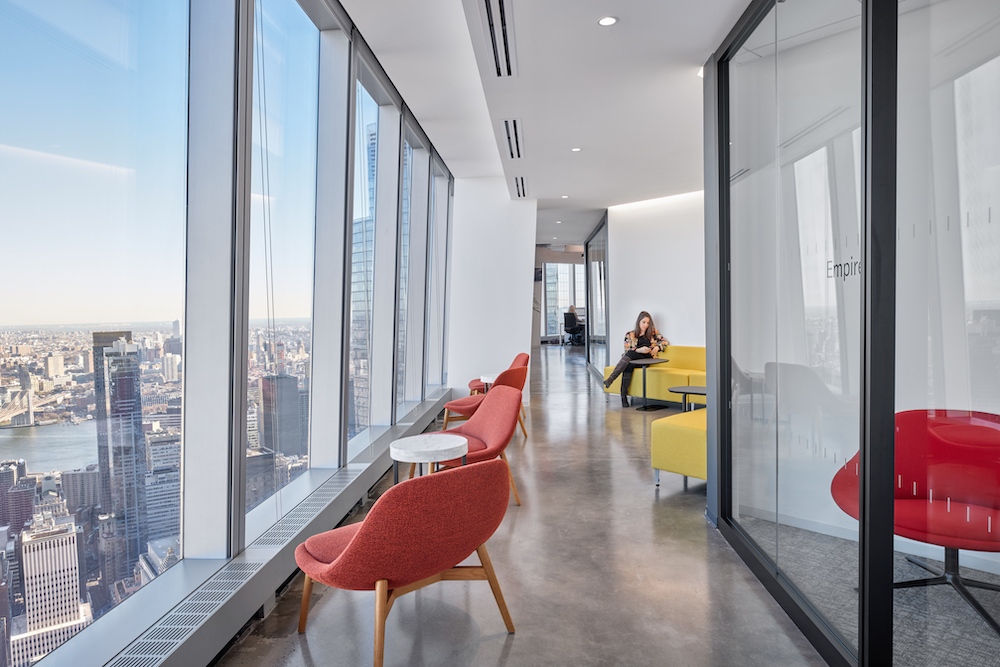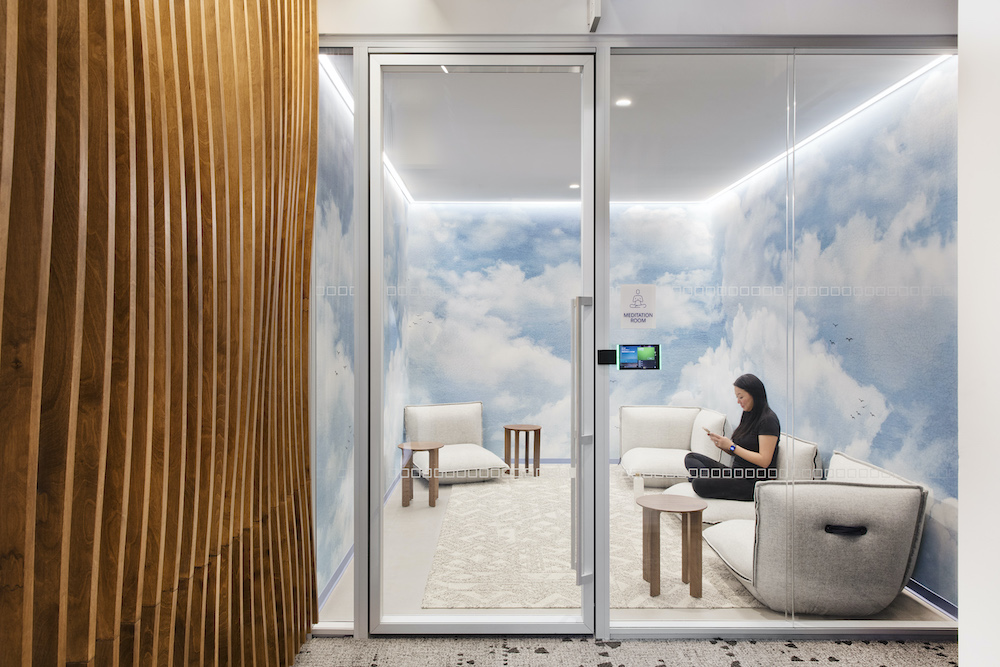What is the key to a healthy, happy workplace? Lauren Gardner and Steven South of Spectorgroup take a look at why environments that make employees feel at home and included are vital.

Workplace wellness is more important than ever as people return to the office and transition from their home work environments to spaces that may not offer the same flexibility. A recent global study by Human Spaces found that 33 percent of people consider the design of an office as part of their decision to work for an organization or not. This illustrates the importance of workplace design and how the way an office makes a person feel is a strong deciding factor to whether or not they want to work there. With the average person spending most of their time at work, it is vital that companies provide an environment that strives for the emotional, physical, and social betterment of employees.
Revitalizing The Workplace
Going to work can be overwhelming, especially when dealing with long commutes and extended hours that result in feeling drained at the end of the day. This is typically due to work environments that feel dull or stagnant, which means employees have to go through the same motions day after day. The office has become more of a destination, and the design needs to reflect that. Employees are no longer enticed by traditional office settings where they’re surrounded by a sea of desks. Breaking up the floor plans creates neighborhoods of space – a key element to a conducive work environment where people can connect without feeling inundated. The concept of collaborative streets and plazas generates healthy traffic throughout an office where inclusion, mentorship, and a sense of place come naturally.
A unique workspace tailored to improve a team’s workflow, connection, and mood effectively can be a great incentive to bring employees back to the office. A residential or hospitality-inspired design approach brings the best aspects of working from home and “third spaces” like coffee shops, libraries, and cafes into the workplace. This can be achieved through various design strategies such as:
- Ample access to daylight and views
- Furniture that provides comfort and supports productivity
- Creating more warmth through the use of natural materials, textures, and plants
- Optimizing circulation between workstations
Providing those in the office with flexible work options can make a difference in mood and behavior. Employees can reposition and reenergize themselves from collaborative spaces to lounge areas, making the workday feel positive and productive. Introducing a new layout where people can move around different areas in the office allows for more interaction and the sharing of ideas – an important aspect designers consider when creating moments of socialization to cultivate company culture through design.
Incorporating wellness design in all aspects of the workplace down to the overlooked details can reinvigorate employees as well as company culture, breathing new life back into the traditional office.

A Healthy Workplace Is A Happy Workplace
There’s no doubt that a company is only as energized as its employees and that their wellbeing is a top priority. To reverberate the idea of how important the mental and physical health of employees is to an organization, an office should be equipped with flexible spaces and programs for employees to be able to focus on their health, even if they are not at home. For instance, a room that can flex from a yoga/meditation room to a prayer room allows a safe place to reflect. Or spaces like game rooms and music rooms that cater to the interests of employees and allow them the time and space to enjoy their home activities while at the office. With spaces like these, employees are given a chance to decompress during the day without leaving the office, which can ultimately spark creativity or simply be a quick respite from a busy workday.
Aside from recreational spaces, recognizing that people have unique skill sets and preferences is significant as employers build a strong team. Rather than offering a plethora of desirable amenities, it is important to take it a step further and offer spaces that consider a larger spectrum of cognitive function. Areas within an office that are distinct provide support for different workstyles and neurodiversity. Employees that have access to different atmospheres within the office allow them to work in a way that best suits their needs. From specific sensitivities to light and noise, universal design strategies are a go-to in fostering an inclusive workplace. Curating spaces that offer a balance for everyone is similar to writing music – there are crescendos and decrescendos – moments where energy is elevated contrasted by moments of peace. By offering various options between spaces, employees can feel supported and work in a way that aligns with their needs, enhancing the work experience.
These are just some of the key ways offices can be designed around the needs of employees, bringing a sense of belonging and supporting their wellness every day.

How We Can Maintain Healthy, Happy Workplaces
Reevaluating company benefits to extend to self-care can make a big difference for employees, and implementing policies like mental days or offering wellness stipends and gym memberships can encourage people to take time to rest and recharge. Pushing these policies allows employees to return to the office with a healthier mind and body. When companies keep employees’ health in mind and understand their needs, they create positive work environments.
Wellness is a prerequisite in design and a valuable business investment for organizations looking to reduce absenteeism and stress while increasing productivity and happiness. A workplace with a great range of functionality for all employees can cultivate a dynamic company culture and boost employee satisfaction. Providing choice and agency paves the way for connection and ultimately shapes how employees work alone and together. The key to healthy, happy workplaces is environments that make employees feel at home and included.

